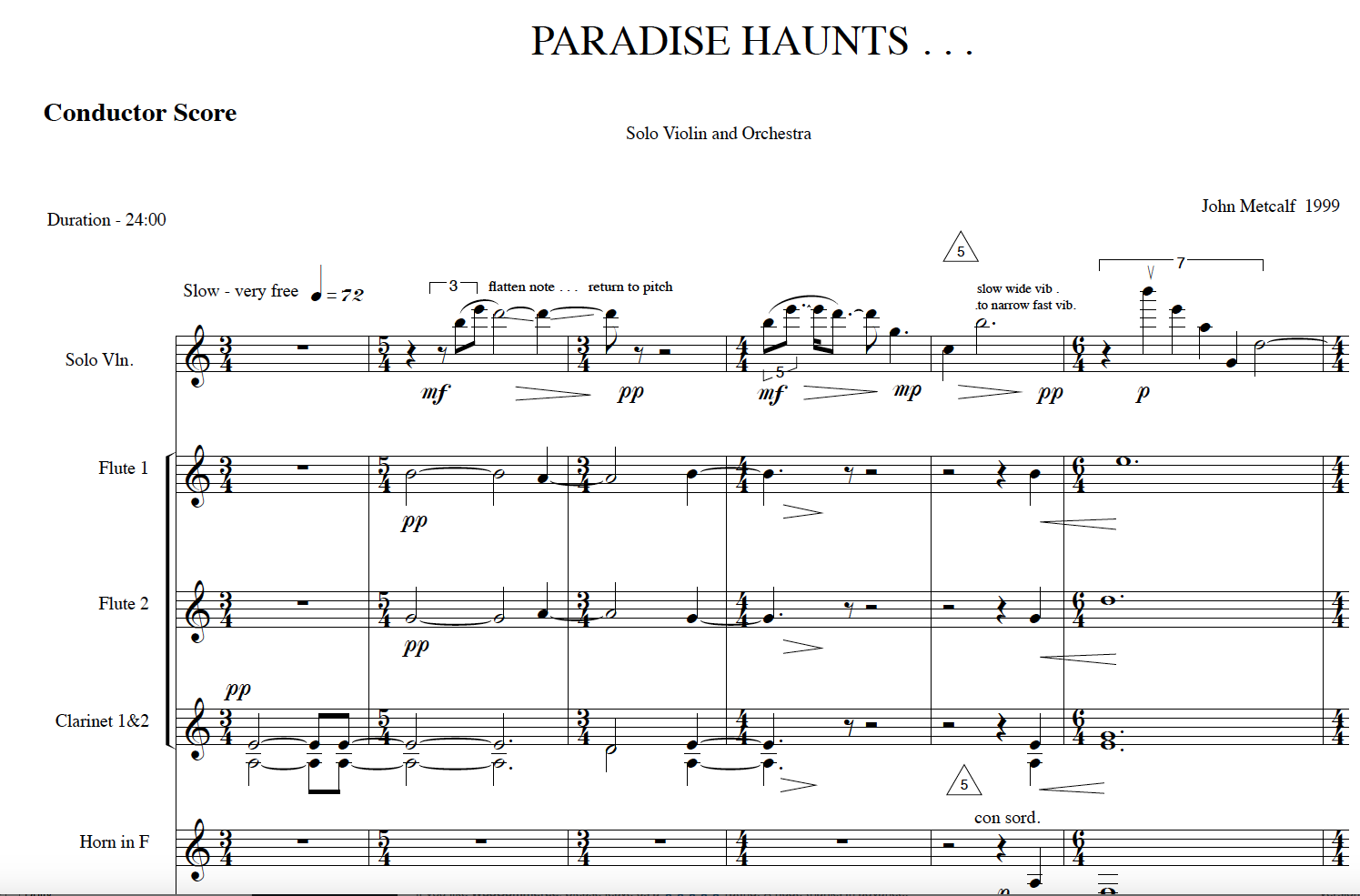Programme Note
Thomas Bowes, after hearing a performance of my music in 1994, invited me to compose a new piece for him. A chance reading of a review of a book about film-maker Derek Jarman’s garden started the creative process. The particular quote that became etched on my memory was “paradise haunts gardens and it haunts mine”. As well as the starting point it gave me the central impetus for the work – the sense of the metaphysical that inhabits gardens (which others have also noted) – and, of course, the work’s title.
Jarman’s garden was very distinctive and the images of it were striking. Contrasts abounded – between exotic plant species and driftwood sculpture, the austere beauty of the Kent coast and the dominating presence of the nearby nuclear power station. But the focus of the inspiration for the piece also quickly moved both to gardens in general and moreover to my own wild garden by the Afon Teifi in West Wales. Also present in the piece is a sense of mortality. Jarman’s garden had been developed in the last years of his life and had clearly been important to him during his final illness.
As the composition progressed I found myself drawn into new creative areas. For some years I had been moving towards a pan-diatonic, ‘white-note’ music. Though ‘Paradise Haunts’ marked the completion of this stage of development it was nevertheless quite a shock to write such an extended work without any chromatic change. The piece is in strict variation form and the white note harmony rotates around a simple four note progression in the bass – A/F/D/E. Notwithstanding this rigour and simplicity, the surface of the music is in no way ‘minimal’ but is characterised, rather, by essentially familiar contrasts of mood and texture. The violin writing is often virtuosic and incorporates fast passage work and, in one section, rapid alternation between arco playing, left hand and standard (right hand) pizzicato. The piece is at times impressionistic and also to a degree suggestive, in what might be called a naturalistic way, of the subject matter.
The variations proceed without a break, an emotional progression informing the music and moving it forward. Towards the end of the work a long flowing passage of endless melody leads to a sustained climax and what seems like a very final chord, the solo part doing a downward glissando into silence. This was, indeed, the intended ending of the piece – but it was not to be. At this point in the composition I felt the need to continue and I did, writing the last five minutes of the piece in a single afternoon in July 1995. In a final section, after a brief return to the music of the very opening of the piece and a series of elegiac chords answered by single notes on tubular bells, the violin again climbs steadily accompanied by reiterated chords before once more subsiding gradually into silence, this time in a new, unknown, space.
The original version of ‘Paradise Haunts’ was for violin and piano and was premiered on 3rd October 1995 by Thomas Bowes and Eleanor Alberga in St. David’s Hall, Cardiff. I subsequently orchestrated the work. Thomas Bowes also gave the world premiere of this version with the BBC National Orchestra of Wales conducted by Grant Llewelyn on 9th September 1999 in Llandaff Cathedral as part of the 1999 Vale of Glamorgan Festival.
